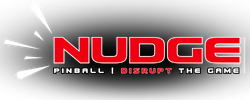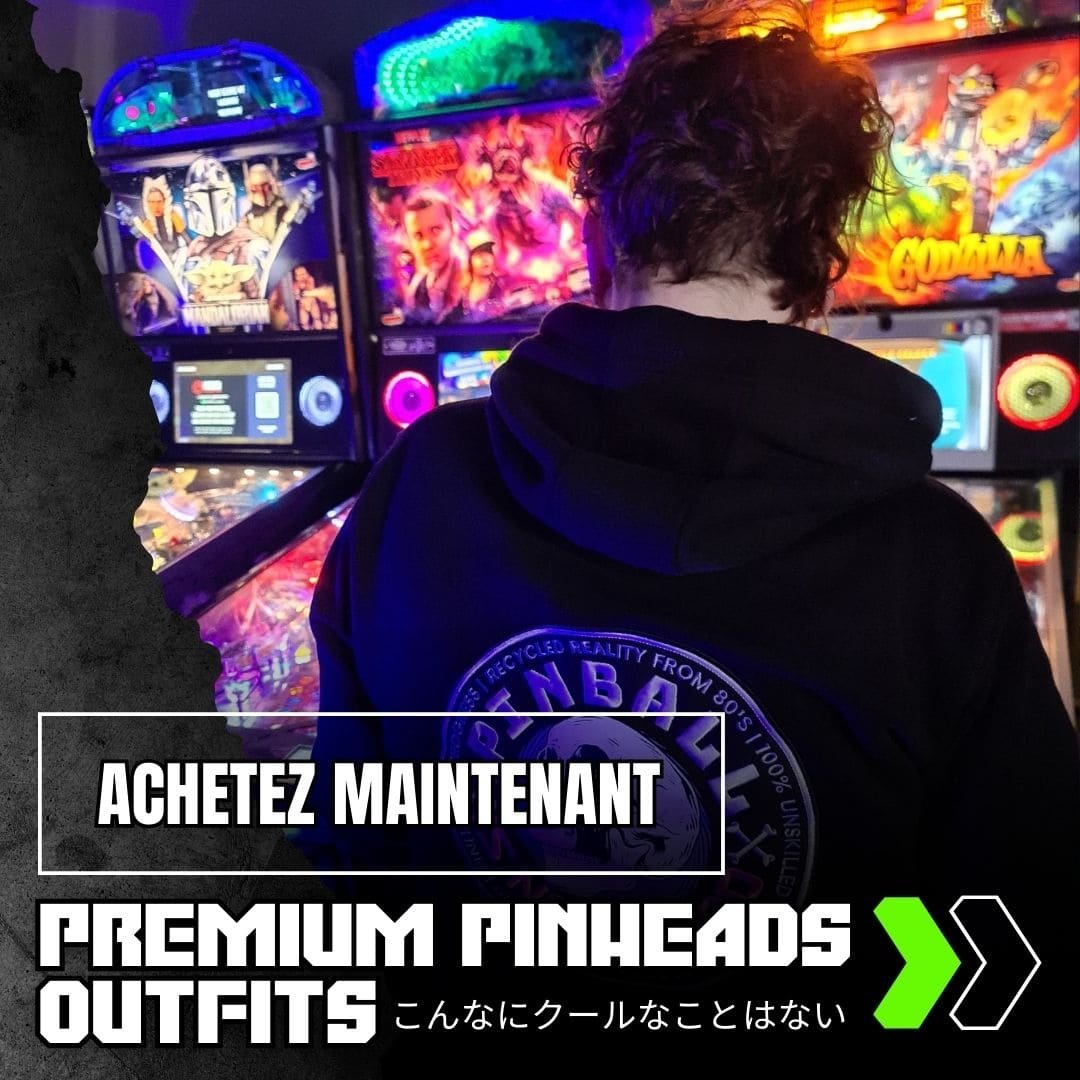As Syl Vain wrote in his article on The Flintstones pinball, there was a time when pinball manufacturers relied on unlikely licenses. And that was no indication of the quality of the pinball machine, which remains a source of amazement for me.
In video games, a movie license has a 90% chance of being turned into a big crappy game. If we zoom in on bad movie licenses, the videogame horror rate rises to 99.99%.
So a pinball machine inspired by a video game license??? If Pinball Mag. had existed in the early 2000s, we would have taken a dislike to it in our podcasts even before seeing the first pixelated picture of the machine. Moreover, previous attempts, such as Street Fighter II or the two Mario games, all of which came out of the Gottlieb factories, had not particularly made an impression 10 years earlier.
And yet, RollerCoaster Tycoon is a successful machine, even if the bet seemed daring.
Sommaire
- 1 The RollerCoaster Tycoon video game: a vomit-inducing roller coaster simulator
- 2 The birth of the “tycoons” genre
- 3 How to turn a management game into a pinball machine?
- 4 Good old Pat Lawlor’s design
- 5 Let’s visit the playfield
- 6 A simple code like “hi, one hotdog please”
- 7 Is the Wizard Mode really one?
- 8 The troll out of nowhere
- 9 The skillshot of the soft
- 10 The ultimate consumer pinball machine
The RollerCoaster Tycoon video game: a vomit-inducing roller coaster simulator
This pinball is from a video game. And we go from surprise to amazement: it’s a management game! Sim City style if you will, although it pains me to simplify it that much.

In the video game released in 1999, you are the manager of an amusement park. You have to buy rides for all audiences, draw the park’s plan, design the queues, set up the drink and candy stands, define the entrance fees, hire the staff… In short, to be the boss, and to complain about the fact that “the young people of today have no sense of work, look at them asking for a raise when they haven’t even proven themselves yet”. It’s nice when the roles are reversed, isn’t it?
OK, the universe is nice and the gameplay is rich without taking itself too seriously. But the “real plus” lies in the design of the roller coasters: the player/manager can create his own roller coaster or some Big Thunder Mountain! Within the limits of his available budget, he lays the tracks under his train section by section. Once the attraction is completed, a test ride is performed and sensation and nausea statistics are given back. The goal is to design a ride that will give you the chills but not the puke!
The birth of the “tycoons” genre
With this first game, the “tycoons” have found their standard. There were others before, and not the least like Railroad Tycoon, but the democratization of the genre started with this virtual amusement park. The formula will be declined with more or less success: Rollercoaster Tycoon 2 then 3, Zoo Tycoon and others less memorable.
Besides, the release of the pinball machine coincided with the release of the second game, and the marketers at Stern advertised the sales of the first in their flyers.

Even today, there are many variations on the “tycoon” principle. Independent publishers still keep the flame alive for those who are keen on managing establishments of all kinds.
How to turn a management game into a pinball machine?
How do you make a successful pinball machine with such a material? Mmmh, let’s see… The video game is fun because of the roller coasters. A pinball machine is cool because of its ramps, among other things. Eureka! Let’s make the ramps look like roller coasters!
This is the big strength of the machine: its ramps of all colors are made of original convolutions. The most surprising one starts in the back of the playfield, runs along the right side from top to bottom, passes over the flippers and ends on the left lane. From there, the ball is sent back to the bottom of the board, or is “locked” for the multiball depending on the context.

The first time, you giggle with amazement and pleasure. This ramp alone makes this pinball machine memorable.
The other two colorful ramps don’t go as far in the craziness, but spin enough to rival the best in the industry. The fun is definitely there.
Good old Pat Lawlor’s design
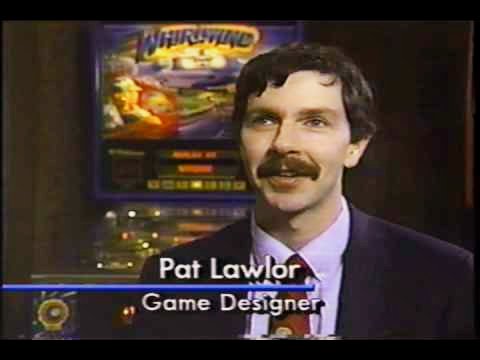
There is no secret: when you want an original machine, you ask Pat Lawlor, the brilliant creator of Twilight Zone pinball and the FunHouse machine.
In 2000, Pat joined Stern Pinball with his entourage, including John Youssi on artworks. His first machine is Monopoly. Another weird license, but still a pinball machine worth discovering from what I’ve heard.
RollerCoaster Tycoon is his second machine on Gary Stern’s team.
Let’s visit the playfield
We‘ve talked about the ramps. There are four of them, each with a name of a fairground attraction: The Flying Ghost, The Rocket, The Flying Turns, The Chicago Loop. 3 of them are colored (red, blue, yellow), the last one is called an “inverted roller coaster”, which, I admit, is not obvious when you look at the playfield. It is in fact a steep ramp that makes the ball do a 180°. A little exaggeration won’t harm us.
Note the presence of a 3rd flipper in the middle right, which allows access to bumpers and falling targets at the bottom.
A small DMD screen displays useful information to the player, including the number of guests in the park. This is an important indicator because your score depends on it, guest numbers increase as you chain ramps, clear targets… Very simple. Let’s talk about it.
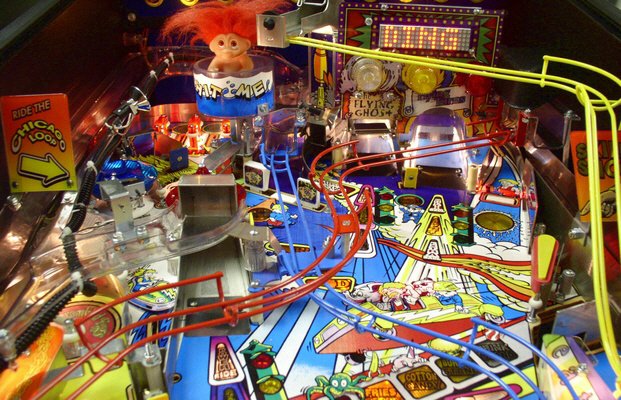
A simple code like “hi, one hotdog please”
I like pinball games that are easy to learn, where the objectives are obvious from the start game. This does not mean that they lack depth or difficulty.
Here, the rules make me feel good: you have to accumulate as many visitors as possible. Just about everything on the playfield fills the gauge. It is displayed on the DMD mini-screen. Roughly speaking, visitors and points follow the same progression.
The challenge becomes clearer when everything you do (targets, ramps) moves you forward. Moving the ball around as long as possible becomes a goal in itself. You play for a long time, you go around the field, you save your ball regularly, you get rewarded! It’s not that complicated! Why bother?
Multiballs become available as you “build” your roller coaster, that is, as you ride the corresponding ramps.
Is the Wizard Mode really one?
Besides that, missions named FUN modes, once completed, give you access to the Wizard Mode: the Park Tycoon.
At this point, the number of guests in the park freezes. This final timed mission consists of going through the ramps and a particular area of the set, the Scrambled Egg. The number of points also depends on the number of guests accumulated before the mission starts. At the end of the mission, the visitor gauge resets, as does your roller coaster construction. And you’re off for another ride.
Some may not consider Park Tycoon a wizard mode, perhaps because it can be reached without completing all the other missions, and perhaps because it is stingy on points if you haven’t taken the time to fill your park with guests properly beforehand.
Yeah… A mission conditioned by the completion of others, and what’s more, resets a part of it, I say it’s a wizard mode. Whatever.
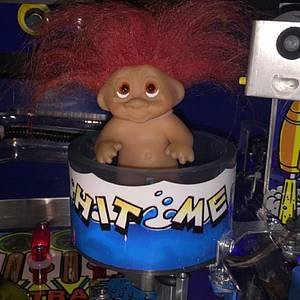
The troll out of nowhere
A Troll figurine sits in its floaty barrel at the bottom of the board. For those who don’t remember them, Trolls were toys in the shape of cute but naughty little elves with colorful hair standing on their heads. Children used to collect them in those days.
What does this have to do with the theme, you might ask? The attraction is a “Dunk The Dummy,”. But as for the troll, no idea. Stern must have had some stock lying around. In any case, there is no link with the license. Besides, the attraction itself is not present in the video game.
The skillshot of the soft
If you think about it, there are not a hundred different types of skillshot (NDR: a skillshot is a “special move” that is triggered in the first seconds of the game). The first type requires you to align a lighted insert with the ball’s trajectory using the flippers (like in Monster Bash for example). The second one asks you to aim a ramp quickly (like Stern’s Ninja Turtles).
The last one requires you to dose your shot with the shooter. On Elvira’s House of Horrors pinball among others, you can even get a SuperSkillshot by getting the ball in through the secret door hidden behind the mansion.
In this second family, there is the sub-family of the “sluggish shot”. The sluggish shot, really? What’s the point of having to sluggishly launch your ball so that it goes one third of the way across the board, then comes back down and passes through a diverter that usually deposits it ungraciously on the right-hand flipper ? Where is the fun in that?
The ultimate consumer pinball machine
I like to write articles about retro pinball machines, because you get the benefit of the opinions of the owners who bought and resold the machine. In this case, the reason why this pinball machine left some gamerooms is clear: too simple rules, too easy game.
Those who enjoy this pinball game praise its twisting ramps, sounds and call-outs, and call themselves “casual” players. Those who criticize it, point to its very light code, and the lack of respect with which it has appropriated the license.
Everyone is right, no one is wrong. Somehow, this pinball machine missed its target, its time. Being designed in the early 2000s, it could have, or should have been designed for home use. But it was resolutely turned towards arcades that were disappearing faster than the North Pole.
That’s easy to say in hindsight, you might say. But let’s be demanding when we’re talking about one of the best designers of all time and the most far-sighted boss in the history of pinball.
Let’s sum up this pinball machine: a fun machine, easy to understand, but that doesn’t pay much attention to its license universe.
